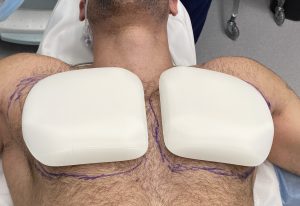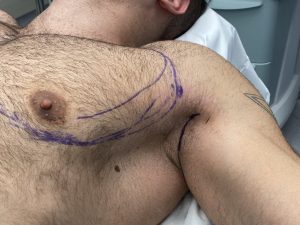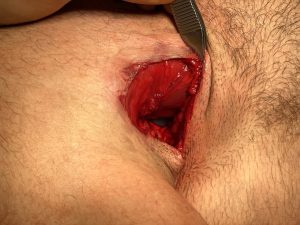Background: Pectoral implants are used for male chest enhancement and, most commonly, are done for the same reason women get breast implants. (lack of adequate development) Males with small chest muscles who just want to have a normal chest or want some chest enhancement over what they have achieved by their exercise program make up the vast majority of pectoral implant patients.
A small percent of chest augmentation patients are true body builders. They already have what every male would like to have their chest look like or may even be bigger than many men would want. Their chest augmentation goals are different and would be best defined as extreme although a better description would be extraordinary. Just like the more average male who has reached the limit of what can be done with their exercise program, the body builder has reached what they can achieve with their more rigorous and dedicated program.
Body builders have obviously larger chest muscles. But in manipulating them it is important to know that along with the increased size the muscle density is also greater. Due to chronic muscle fiber hypertrophy from years of effort their muscles are stiffer and can sometimes feel like actual implants as a result. This means that during surgery the pocket dissection will be more difficult and the stretch of the muscles will be less. This will have an impact on surgeon effort, operative time as well as what volume of implant can be placed.




One would presume that the larger the pectoralis muscle that is elevated off the chest wall the more significant the postoperative recovery would be. While that is true to some degree it is not a linear relationship. Double the size of the muscle does not mean there is double the recovery. There is probably more to be sure but not appreciably so. What is often the difficult aspect of the recovery is the incisional healing. It is fairly traumatic to get the implant past such a small incision and the frictional trauma to the skin edges can cause the incision to undergo some delayed full healing.
Case Highlights:
1) Pectoral implants can be used in patients with already enlarged pectoral muscles…but the pocket dissection will be more difficult.
2) Bodybuilders seeking pectoral implants will need the lateral implant edge to go beyond the outer border of the pectoral muscles to create the rounded edge muscle look.
3) The recovery from pectoral implant augmentation in bodybuilders should not be much longer than in non-body builder patients.
Dr. Barry Eppley
Indianapolis, Indiana










